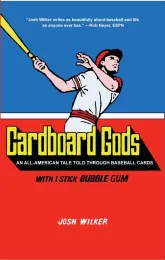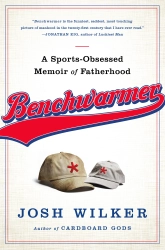“I think I should take the hardest swings I can every time I’m at the plate.” – Harmon Killebrew
A while ago I wrote about how much Harmon Killebrew’s 1975 baseball card meant to me, but I don’t think I mentioned that one of the reasons I was drawn to it so much was that it was my only Harmon Killebrew card, a singular tangible connection to the unusual, powerful name and the staggering statistics reaching back toward the dawn of time, or at least to the pre-expansion days of the original Washington Senators. I saw Killebrew, towering in my mind among the whippet-thin, polyester-clad, Astroturf-skittering rank and file of the mid-1970s, as some kind of miraculous survivor from a prehistoric age of giants.
Just this morning I discovered that I had one other trace of Killebrew in my collection, and it seems to suggest the other side of the man who was both a giant and a regular guy, a mensch. He’s off to the side in the first row, number 3, looking like he could just as likely be an older fellow on the coaching staff as the greatest player in the history of the franchise.
He didn’t hold himself above anybody else on his team or in life, and he made the most of his at-bat.
***
The Sports Illustrated archive offers some excellent glimpses of Killebrew through the years.
Below is an excerpt from a 1959 piece on Killebrew as a young slugger:
Killebrew’s swing is designed for the home run. He stands deep in the batter’s box. He grips his 33-ounce bat at the end and holds it high. When he swings, it is a brutal stroke. His home runs are long ones. But he also strikes out a lot. In the past he has often been attracted to the chin-high fast ball that sends so many promising hitters back to the minors. This year he has been trying to wait for strikes, but even so he has struck out frequently. One night against Cleveland, he struck out three times, then hit a 430-foot home run.
A few years later, he had matured into a Buddha of the long ball:
Killebrew has grown into a proud, private man whose approach to hitting, he says, is a good reflection of his life-style. Killebrew puts on his hard hat one turn before he is due in the on-deck circle and stands motionless next to the bat rack, staring at the pitcher. When his time comes, he moves to the on-deck area, takes three or four bruising swings and then kneels motionless, again staring at the pitcher. In the batters’ box he makes one cursory swish with his bat between pitches. Then he simply stands, again stock still, with the bat resting on his shoulder. He waits to cock his bat until the pitcher, whose hands Killebrew has been concentrating on, begins his windup. The whole process is done with a let’s-get-down-to-it air. “That’s pretty much the way I am,” says Killebrew. “I’m not a fidgety person. I try to stay as calm and relaxed as I can. It helps me concentrate, which I think is the most important thing about hitting.”
And then, in 1999, many years after his playing days were over, he got so sick that doctors believed there was nothing to be done and that he should go home to die. He went into hospice care but recovered, miraculously, and this glimpse of what comes next for all of us caused him to respond with kindness and compassion:
“Hospice is such a tremendous thing,” Killebrew says. “Patients seem to reach an inner peace. Society doesn’t like to deal with death, but it’s a natural part of living.” Never a big talker, Killebrew, 63, developed excellent listening skills, which helped him conduct a pregame radio interview show for 12 seasons while he was playing for the Twins. Now he listens to patients, providing happy memories for them in their final days.







You must be logged in to post a comment.